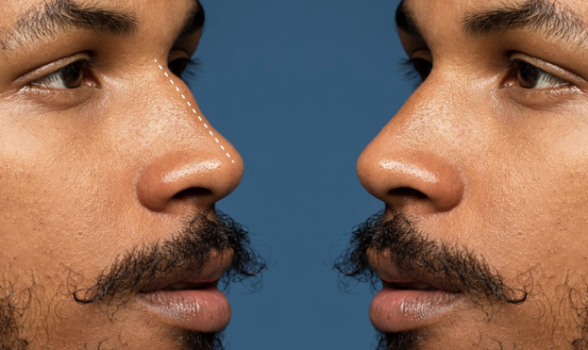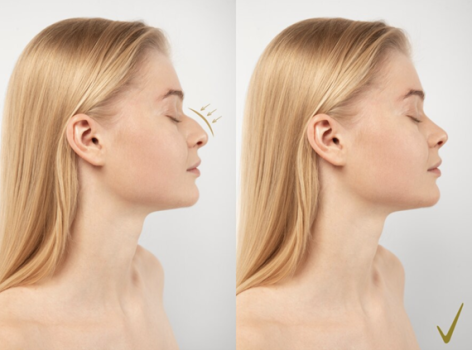Rhinoplasty Recovery: What to Expect in the Weeks Following Surgery
Rhinoplasty, often referred to as a “nose job,” is one of the most popular cosmetic surgical procedures, allowing individuals to reshape or resize their noses for both aesthetic and functional purposes. While many patients focus on the outcome of the surgery, it is equally important to understand the recovery process that follows. Recovery after rhinoplasty is a crucial phase that influences both the results of the surgery and the overall well-being of the patient. In this comprehensive guide, we will explore what to expect in the weeks following your rhinoplasty, covering everything from the immediate postoperative period to long-term recovery.
Understanding Rhinoplasty
Before diving into the recovery process, it’s essential to understand what rhinoplasty entails. This surgical procedure can be performed for various reasons, including:
- Aesthetic Enhancement: Reshaping the nose to improve facial harmony.
- Functional Improvement: Correcting structural issues such as a deviated septum that may affect breathing.
- Trauma Reconstruction: Repairing damage caused by injury or congenital defects.
The specific techniques used during rhinoplasty can vary based on the patient’s unique needs and the surgeon’s expertise. Generally, the procedure involves making incisions either inside the nostrils or across the columella (the strip of tissue between the nostrils) to access the underlying structures of the nose.

The Immediate Postoperative Period
- After the Surgery
Once your rhinoplasty is completed, you will be moved to a recovery room where medical staff will monitor you as you wake up from anesthesia. This initial period typically lasts a couple of hours, during which you may feel groggy and disoriented. It’s important to have a responsible adult with you, as you will not be allowed to drive home.
- Discomfort and Pain Management
Some discomfort, swelling, and bruising are normal after rhinoplasty. You may experience:
- Nasal Congestion: Due to swelling and packing, you may feel like you have a cold.
- Minor Pain: A prescription or over-the-counter pain medication will help manage this discomfort.
- Headaches: Mild headaches can occur, but they usually subside with medication.
- Nasal Packing and Splinting
Depending on the complexity of your surgery, your surgeon may use nasal packing to control bleeding and swelling. This packing is typically removed within 24 to 72 hours after the surgery. Additionally, an external splint is usually placed on your nose to protect it and maintain its new shape. This splint is generally removed about one week post-surgery.
Week-by-Week Recovery Expectations
Week 1: The Initial Recovery Phase
- Swelling and Bruising: Expect noticeable swelling and bruising around your eyes and nose. This is a normal reaction to surgery and will begin to subside over the week. Cold compresses can help reduce swelling.
- Nasal Congestion: You may experience significant nasal congestion due to swelling and the effects of packing. Breathing through your mouth may be necessary, leading to dryness and discomfort.
- Activity Limitations: For the first week, avoid strenuous activities, heavy lifting, and any exercise. Rest is essential for recovery, and you should keep your head elevated to minimize swelling.
- Follow-Up Appointment: A follow-up appointment is typically scheduled within a week after surgery to remove the splint and assess your healing progress.
Week 2: Adjusting to Changes
- Reduced Swelling: By the end of the second week, much of the swelling should have decreased significantly. However, some residual swelling may persist, especially at the tip of your nose.
- Resuming Normal Activities: While light activities can generally be resumed, it’s advisable to avoid intense exercise or activities that risk injury to the nose.
- Self-Care: Continue to take care of your nose by avoiding any pressure on it, including wearing glasses. If you require vision correction, consider switching to contact lenses for a few weeks.
Week 3-4: Continued Healing
- Gradual Improvement: The initial swelling should continue to decrease, and you’ll likely start to see the final shape of your nose emerging. Most bruising should have resolved, although some lingering discoloration may be present.
- Increased Activity: Most patients can resume more vigorous activities and exercise by the end of the fourth week, but be cautious and listen to your body.
- Emotional Adjustments: Emotional fluctuations are normal during recovery. As your appearance changes, you may experience a mix of excitement and anxiety as you adjust to your new nose.
Weeks 5-8: Refining Your Results
- Final Swelling Reduction: By the end of eight weeks, the majority of the swelling should be gone, although some subtle swelling may remain, particularly at the tip of the nose.
- Return to Normal Life: You should be able to return to all normal activities, including high-intensity workouts, social events, and daily routines.
- Follow-Up Appointments: Continue attending any scheduled follow-up appointments with your surgeon to monitor your recovery and address any concerns.

Long-Term Recovery and Results
- Three to Six Months Post-Surgery
While the initial recovery phase may seem complete within a couple of months, it can take up to a year for your nose to fully settle into its new shape. During this time:
- Subtle Changes: Your nose may continue to change slightly as swelling dissipates and tissues heal.
- Regular Check-Ins: Stay in touch with your surgeon for any long-term assessments, and report any unusual symptoms.
- Final Results
Final results from rhinoplasty can often be seen around the six to twelve-month mark. By this time, your nose will have settled into its final shape, and you should have a clear sense of the outcome.
Tips for a Smooth Recovery
- Follow Postoperative Instructions: Adhere to all guidelines given by your surgeon for medications, activity limitations, and follow-up appointments.
- Maintain a Healthy Lifestyle: Eat a balanced diet, stay hydrated, and get enough rest to support your recovery.
- Avoid Sun Exposure: Protect your healing skin from sun exposure by wearing sunscreen and hats. Sunburn can affect healing and alter the appearance of your nose.
- Limit Alcohol and Tobacco: Both substances can impair healing. It’s best to avoid them during the recovery phase.
- Communicate with Your Surgeon: Reach out to your surgeon if you have concerns, questions, or notice anything unusual during your recovery.

Conclusion
Rhinoplasty recovery can be a challenging yet rewarding journey. Understanding what to expect in the weeks following your surgery can help ease anxiety and prepare you for the changes ahead. By adhering to your surgeon’s guidelines and taking proactive steps in your recovery, you can enhance your chances of achieving the beautiful, balanced results you desire. If you’re considering rhinoplasty, don’t hesitate to discuss the procedure and recovery process with your board-certified plastic surgeon, who can provide personalized guidance tailored to your unique needs. Remember, the goal is not just to change your appearance but to enhance your confidence and quality of life.
